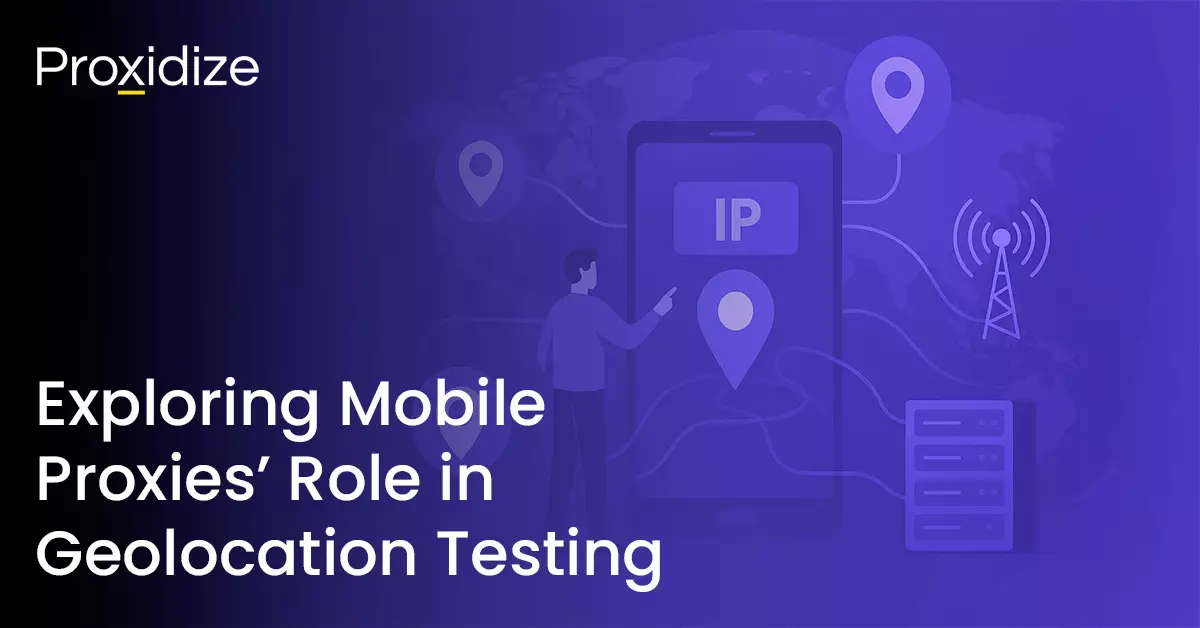
Introduction to Geolocation Testing
Geolocation testing is the process of testing applications, websites, and digital services on different geographical IP addresses. Doing this is vital to ensure all programs run efficiently and effectively on international servers.
Typically, when a programmer or developer creates a program, they ensure that it runs smoothly on their local server. However, suppose they plan on making the program readily available to international markets. In that case, they have to perform geographical testing as a way to see if any errors pop up when the program is run anywhere else in the world.
Occasionally, this is done for e-commerce websites that want to offer international shipping. They have to make sure that if their US-based website is run in Canada, the prices must show up in Canadian dollars and when checking out, should reflect that the shipping costs account for that country’s currency. Geographical testing is an important part of many organizations as it helps them confirm if their services are functional in other countries.
One of the ways companies plan out geolocation testing is by using mobile proxies. They play an important role as they enable testers to simulate traffic from specific locations around the world. Through this type of proxy server, they can access how content is delivered, the speed of a website, and other general functionalities in different regions. This helps ensure that users everywhere are receiving tailored content, relevant advertisements, and the most optimal performance. Using a mobile proxy has the added advantage of testing how the service works on mobile devices and networks.
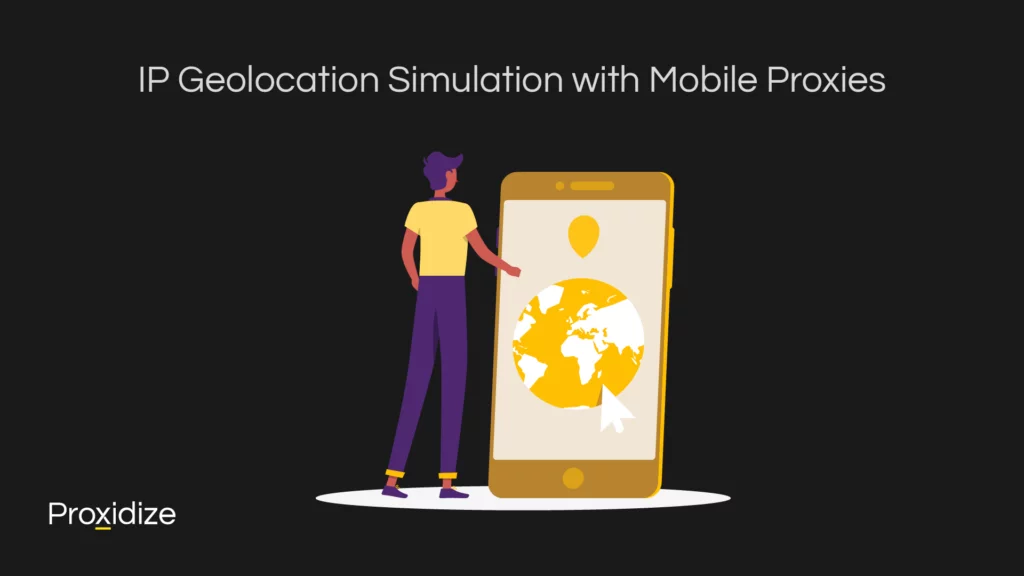
IP Geolocation Simulation with Mobile Proxies
Websites would often rely on IP geolocation as a way to discover a user’s physical location. With the address, they can deliver region-specific content, apply any necessary geo-restricted content warnings, or show local advertisements. The way IP geolocation is done is through databases that associate IP ranges to specific regions. Streaming services would often use the data to present users with content that is permitted for their region, given any licensing agreements made by the publishers. IP geolocation takes the IP address range along with other factors such as routing information and data packages transmitted through online activities to gain an appropriate location. Occasionally, it is not enough to just know the city or town an IP is in, sometimes it is necessary to know the exact neighborhood so advertisements can be targeted to that person. It would be unnecessary to send someone an advertisement for a store that is on the other side of town. While it may be effective, targeting someone who lives closer would be far more useful.
Mobile proxies enhance this by using real mobile IP addresses to simulate traffic from different geographical addresses. When program or advertisement testers use mobile proxies, their traffic appears to originate from a mobile device that is connected to a cell tower that houses that mobile IP. This gives them the necessary tools to test geolocation-dependent services and ensures results that reflect real-world conditions. Mobile proxies can help businesses evaluate region performance by ensuring localized content delivery and optional functionality in specific regions. With a mobile proxy, a tester can spoof their location and take advantage of testing their service in another country without needing to hire a tester from that country. However, while it may seem like a risk to hire an outside localization expert, it is even more risky to attempt localization without knowing the culture and language of the region. It is better to hire an external team to assist with localization rather than relying on tools like generative AI for localization as they may not be efficient with translations. Ensuring the application or advertisement follows the language and culture of the region can be the difference between getting conversations and offending an entire potential target market.
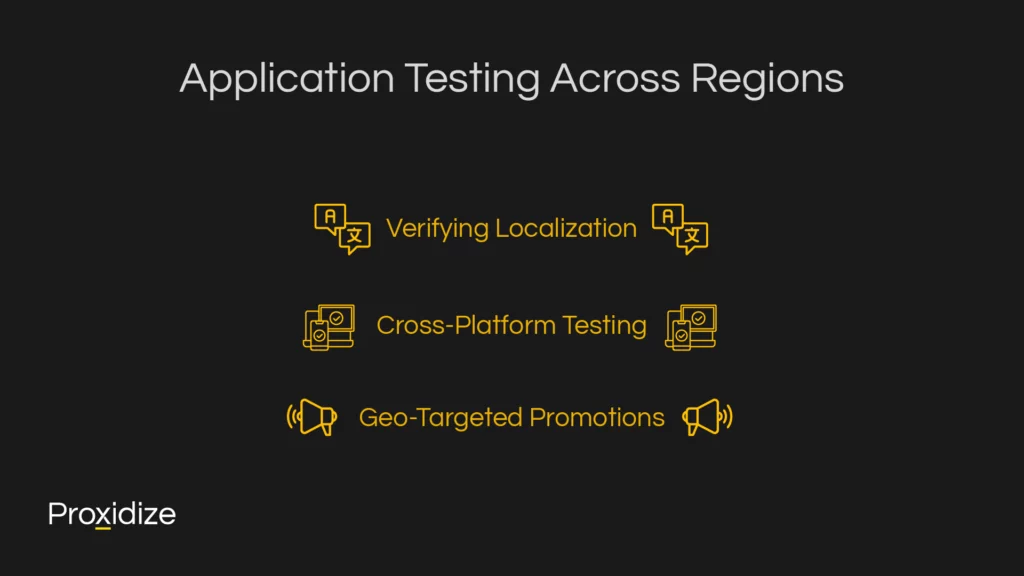
Application Testing Across Regions
Localized testing is mandatory for apps or services that cater to an international audience because of how a user’s experience varies depending on the region they are from. Testing to make sure that language, culture, legal requirements, and network infrastructure are taken into consideration can greatly impact how users interact with an application or service. Failure to test for these vital details can lead to irrelevant and inaccessible content appearing to users. Localized testing can make sure an application or service caters to diverse users and creates a consistent experience for everyone.
The way that mobile proxies assist with this process is by enabling testers to simulate user interactions from various geographical locations. With these proxies, testers can verify that content on their website is region-specific, showing up in the correct language of that region, and that any promotions are displayed to the target audience. They can also assist with cross-platform testing, giving testers access to how an application performs on different devices and networks. For geographically targeted promotions, proxies allow businesses to ensure that promotional content is shown to the intended audiences in the correct regions. This enhances marketing effectiveness and keeps everything compliant with regional guidelines.
Verifying Localization
Mobile proxies allow testers to simulate traffic from various regions which makes it possible for them to assess region-specific aspects like language, currency, and user interface adjustments. By using IPs from specific regions, testers can verify if applications and websites automatically adapt to a user’s language settings and that currency formats are presented in relation to the user’s country. This is crucial for ensuring that users see the correct translations, the appropriate prices, and that the user interface elements are tailored for their region.
Cross-Platform Testing
Mobile proxies are necessary for cross-platform testing because of how they can be used to test out different platform and network conditions. They can assess an application or website in terms of performance across different networks (such as 4G or 5G) and how responsive it is through the network or devices. Proxies can help testers experience regional variations in connectivity, latency, and network quality across their service. These are important for identifying any performance issues and giving them the ability to do tests under varied conditions that can help deliver smoother user experiences.
Geo-Targeted Promotions
For businesses that offer location-specific promotions, proxies can be an effective way to test out if the features are working correctly. By using mobile proxies, testers can simulate users from different regions to confirm that any promotional content is displayed correctly and to the right target audience. Doing so will ensure that all users receive relevant promotional content and help maximize the impact of geo-targeted marketing campaigns.
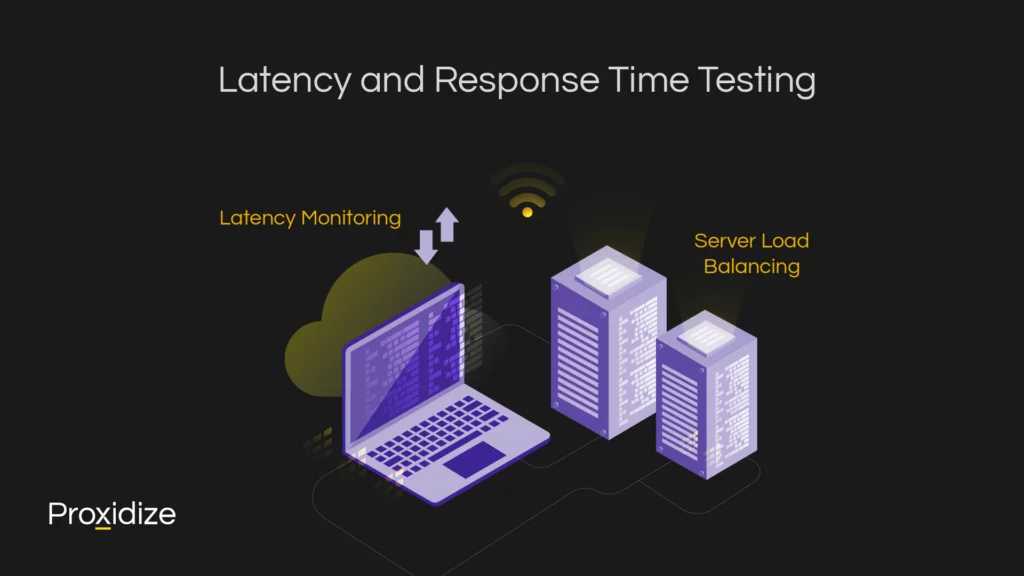
Latency and Response Time Testing
A valuable part of using mobile proxies is that they can help with measuring latency from different regions. Latency testing can help developers gain an understanding of how fast data travels from the server to the user’s device. This heavily influences satisfaction for instances of gaming, streaming, and live chats. Mobile proxies give testers the chance to simulate connections from different geographical locations and network conditions, providing insights into any potential slowdowns that users might face. This type of testing can help companies optimize their infrastructure to minimize latency and provide a smooth user experience for users worldwide. However, it should be noted that latency testing while using a proxy can only help so much. Latency testing with a proxy would mainly test the speed between the server to the proxy and back again and might not be as effective for testing latency between servers in different regions.
Server Load Balancing
Mobile proxies can assist with understanding server load balancing by simulating traffic from different regions. Doing so enables them to test how a system distributes incoming requests across the global servers and helps measure any latency that might result due to this distribution. An advantage of doing this is limiting any bottlenecks or imbalances, making sure that server load balancing works effectively and lowering latency for any and all users regardless of location.
Latency Monitoring
Monitoring latency with mobile proxies is a great way to measure how geographical distance impacts latency and response times. This becomes an essential part of real-time applications such as those related to online gaming, stock trading, and collaboration. Latency issues occur when users are far away from a server. Geographical testing allows developers to test out any latency issues that would arise for users who live as far away from the main server as possible. This reduces customer dissatisfaction and increases the app’s general performance.
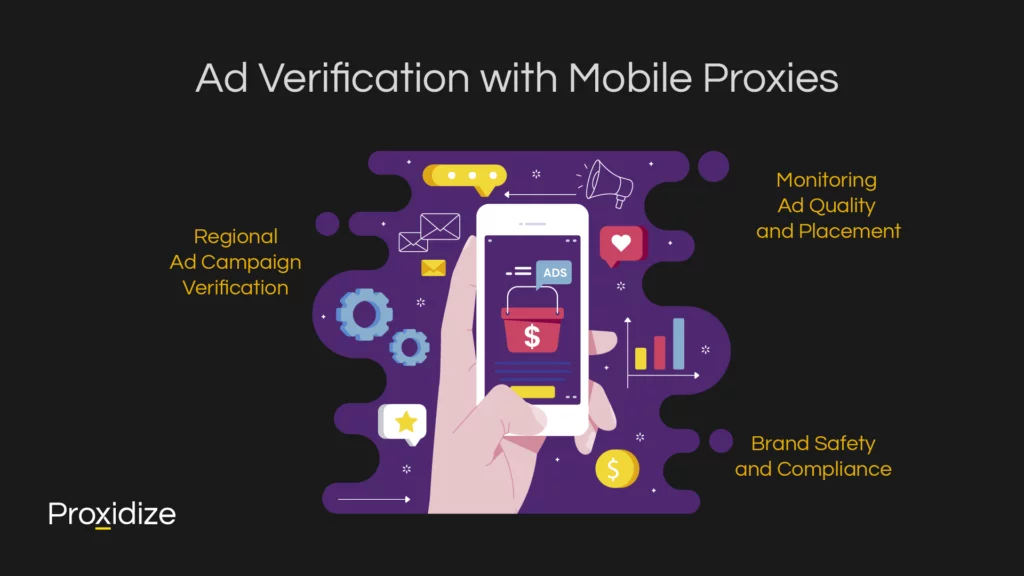
Ad Verification with Mobile Proxies
Advertisers rely on geographical testing to deliver ads to specific regions and to the correct target audience. Ad delivery can vary by location due to differences in ad networks, regulations, and user behavior. Geographical testing with mobile proxies allows advertisers to simulate traffic from specific regions, giving them a chance to confirm that ads are presented to their interest audiences. With mobile proxies, ad verification can ensure that ads reach their intended audience and maintain campaign accuracy as well as optimize ad spend and engagement.
Regional Ad Campaign Verification
With proxies, advertisers can ensure that their ads are presented accurately within the designated regions. As an example, a brand might decide to run a specific promotion targeting users in New York but without region verifications in place, the ads might not reach anyone in New York and could be shown in Buffalo, thus diminishing the effectiveness of the campaign. By simulating user locations, mobile proxies give advertisers the ability to test advertisement delivery in real-time from different regions. They could similarly confirm that their location-based filters are working accurately and that users can see advertisements that are relevant to their area.
Monitoring Ad Quality and Placement
An essential part of advertisement verification is ensuring that ads are shown as intended within appropriate websites or applications. Testers can verify that ads are appearing in their assigned locations as well as making sure the ad is structured correctly in relation to the header, sidebar, or in-content areas. Advertisers can also check ad formats, sizes, and load speeds and that these remain consistent across different devices and network conditions.
Brand Safety and Compliance
Brands have to be careful when it comes to where they place their advertisements online. Many brands do not wish to have their services advertised alongside inappropriate content. By using proxies, marketers can confirm that their advertisements do not appear alongside said content. They could similarly ensure that the website is compliant with region-specific regulations and ensure that ads meet data protection laws. Doing this will help brands maintain a positive reputation and protect them from potential violations or backlash.
Conclusion
Geolocation testing is a necessary part of many websites and businesses that wish to expand their efforts internationally. With mobile proxies, geolocation testing can give testers the chance to test how their applications and websites work in other countries using their 4G or 5G networks. This advantage extends to marketers who want to ensure that their advertisements are being displayed in the appropriate languages and the correct websites so that they reach the intended audience. By correctly using mobile proxies for geolocation testing, developers and marketers can avoid risking their brand identity by providing a product or service that diminishes their customer satisfaction. As an added bonus, using these proxies provides testers and advertisers with increased online privacy when conducting necessary tests.
